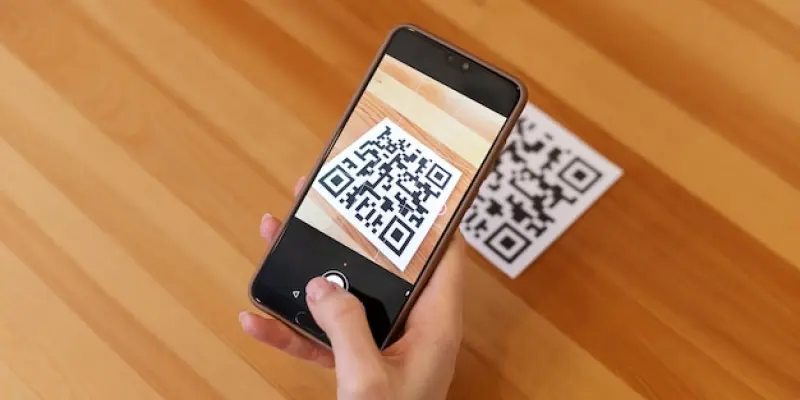In the ever-evolving landscape of e-commerce, payment methodologies have taken center stage as critical facilitators of transactions between merchants and consumers. The introduction of QR code payments has emerged as a transformative force in this domain, promising to revolutionize the checkout process by enhancing efficiency, security, and user experience. By reducing reliance on traditional payment methods that often involve protracted verification procedures and manual data entry, QR code payments are poised to simplify and accelerate the transaction experience for users across the globe. The technology leverages real-time QR code generation during the checkout process, allowing instantaneous payment settlement, thus mitigating long-standing challenges associated with asynchronous prepayments. This integrated approach enhances the financial interchange by ensuring immediate feedback on payment status, presenting a paradigm shift in how transactions are conducted in the digital marketplace. The widespread adoption of QR code technology within banking apps has further propelled this trend, signaling a promising future for agile and secure financial exchanges in the e-commerce realm.
Innovation in Payment Solutions
Gini, a Munich-based fintech company, has spearheaded a technological breakthrough with its introduction of the Instant QR Code Payment solution. This innovative payment method represents a significant advancement in simplifying prepayments in e-commerce transactions. By harnessing the power of QR code technology, Gini provides retailers with a cost-effective, free payment alternative that minimizes the complexity inherent in traditional payment platforms. This breakthrough addresses the cumbersome manual processes merchants typically endure, streamlining the consumer’s checkout experience. As QR codes are rendered in real-time, they can be automatically recognized by the photo functionality of supporting banking apps, empowering instant payments and ensuring transaction security within a trusted framework. Through this adaptive payment solution, Gini shows compelling dedication to refining the merchant-consumer financial interface, enabling seamless operations and fortifying security against prevalent fraud tactics like quishing. Such initiatives align with overarching movements in fintech to deliver easy-to-use, secure, and adaptable payment methodologies that cater to constantly evolving consumer preferences.
Advancing Security and Efficiency
One of the primary benefits of utilizing QR code payments within e-commerce is its significant contribution towards enhancing transaction security. These codes are instantly generated and scanned, greatly reducing opportunities for fraudulent activities typically associated with manual data entry, such as phishing. Particularly, the quishing threat, where malicious QR codes are employed to deceive users, is effectively mitigated due to the authentication protocols integrated within banking apps’ QR code functionalities. This real-time scanning ability not only validates transactions but provides immediate updates on payment status, cultivating a secure environment that fosters consumer trust. From a merchant’s perspective, QR code payments optimize operational efficiency by alleviating the burdensome administrative and verification procedures characteristic of traditional payment platforms. Automation through QR code technology permits a “Pay Now” mechanism that transforms asynchronous prepayment methods, aligning them with consumer demands for swift and reliable financial exchanges. Furthermore, these advances promote higher prepayment rates, reinforcing a more rapid payment receipt for merchants who have long sought improved methods of optimizing revenue streams.
Impact on E-commerce Adoption
The expansion of QR code payment technology within the banking sector has marked a considerable leap forward in the accessibility of agile payment solutions for consumers. Compatibility with web platforms, iOS, and Android, as well as integration with popular e-commerce systems like JTL and Shopware, highlights the expansive potential of this payment method. The market potential is bolstered by a statistic showing that over 90% of individuals possess banking apps that support QR code transactions, presenting ample opportunity for widespread consumer adoption. By facilitating secure and seamless transaction experiences, QR code payments offer both merchants the ability to enhance payment processes and customers a user-friendly solution with heightened ease of use and security. The burgeoning trend in contactless payment innovations indisputably establishes QR code solutions as instrumental tools in the pursuit of optimized e-commerce experiences. Industry consensus suggests these solutions are not only adept at enhancing user experiences but are pivotal in addressing long-standing security concerns present in legacy payment methods.
E-commerce Transformation
In the constantly changing world of e-commerce, payment methods have become key players, facilitating transactions between merchants and consumers. QR code payments have emerged as a game-changer, promising to overhaul the checkout process by boosting efficiency, security, and ease of use. These payments reduce dependence on traditional methods that often entail lengthy verification steps and manual data input. By using real-time QR code generation during checkout, they allow payments to be settled instantly, addressing the persistent issue of delayed prepayments. This technology enhances financial exchanges by providing instant feedback on payment status, representing a fundamental shift in digital transaction processes. Further, the integration of QR code technology into banking apps has accelerated this trend, indicating a bright future for fast, secure financial transactions within e-commerce. As merchants and consumers increasingly embrace this method, QR codes are set to redefine the digital marketplace, offering streamlined experiences across borders and industries.

